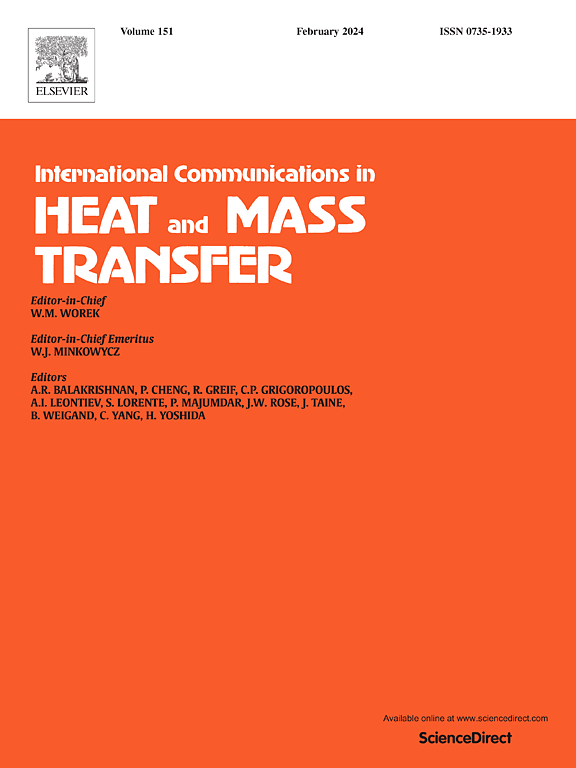Multi-objective optimization of fan-shaped film hole for balancing heat transfer and thermal stress based on ANN and NSGA-II
IF 6.4
2区 工程技术
Q1 MECHANICS
International Communications in Heat and Mass Transfer
Pub Date : 2025-05-20
DOI:10.1016/j.icheatmasstransfer.2025.109045
引用次数: 0
Abstract
Modern aerospace engines demand turbine blade designs that achieve an optimal balance between efficient cooling and structural strength under complex working conditions. Traditional serial design methods, which typically involve a step-by-step approach to addressing each design objective separately, can be time-consuming and insufficient to meet the demands of multi-objective optimization. This study presents a multi-objective optimization methodology for fan-shaped film cooling holes, integrating high-precision artificial neural networks (ANN) with the non-dominated sorting genetic algorithm II (NSGA-II) to efficiently balance heat transfer and thermal stress in design. Meanwhile, the optimization approach can automatically extract features, significantly reducing the reliance on manual interventions. The results demonstrate the optimization improves film cooling effectiveness by 55.8% while reducing the maximum equivalent thermal stress by approximately 14.9%. Parametric analysis reveals that increasing the blowing ratio (0.5 to 2.0), length–diameter ratio (2.8 to 4.6), and streamwise torsion angle (3.0°to 14.0°) can effectively enhance cooling efficiency while concurrently reducing thermal stress. This method identifies optimal geometric parameters for real operating conditions, providing an efficient and practical pathway for the multidisciplinary optimization design of complex film structures.
基于神经网络和NSGA-II的扇形膜孔传热与热应力平衡多目标优化
现代航空发动机要求涡轮叶片设计能够在复杂工作条件下实现高效冷却和结构强度之间的最佳平衡。传统的串行设计方法通常涉及一步一步地分别解决每个设计目标,这既耗时又不足以满足多目标优化的要求。本研究提出了一种扇形气膜冷却孔的多目标优化方法,将高精度人工神经网络(ANN)与非支配排序遗传算法II (NSGA-II)相结合,在设计中有效地平衡传热和热应力。同时,该优化方法可以自动提取特征,大大减少了对人工干预的依赖。结果表明,优化后的气膜冷却效率提高了55.8%,最大等效热应力降低了约14.9%。参数分析表明,增大吹气比(0.5 ~ 2.0)、长径比(2.8 ~ 4.6)和流向扭转角(3.0°~ 14.0°)可以有效提高冷却效率,同时降低热应力。该方法确定了实际工况下的最优几何参数,为复杂膜结构的多学科优化设计提供了一条高效实用的途径。
本文章由计算机程序翻译,如有差异,请以英文原文为准。
求助全文
约1分钟内获得全文
求助全文
来源期刊
CiteScore
11.00
自引率
10.00%
发文量
648
审稿时长
32 days
期刊介绍:
International Communications in Heat and Mass Transfer serves as a world forum for the rapid dissemination of new ideas, new measurement techniques, preliminary findings of ongoing investigations, discussions, and criticisms in the field of heat and mass transfer. Two types of manuscript will be considered for publication: communications (short reports of new work or discussions of work which has already been published) and summaries (abstracts of reports, theses or manuscripts which are too long for publication in full). Together with its companion publication, International Journal of Heat and Mass Transfer, with which it shares the same Board of Editors, this journal is read by research workers and engineers throughout the world.

 求助内容:
求助内容: 应助结果提醒方式:
应助结果提醒方式:


